Welcome to the enchanting realm of spaniels, where the King Charles Spaniel and the Cavalier King Charles Spaniel reign with distinction. These breeds, often mistaken for one another, offer a blend of elegance, history, and personality. In our detailed guide, we unveil the subtle yet significant differences between the King Charles Spaniel and its close relative, the Cavalier King Charles Spaniel. From their royal lineage and distinct physical features to their diverse temperaments and care requirements, we provide an in-depth comparison to help you understand and appreciate the unique qualities of each breed. Whether you’re a seasoned dog lover or considering bringing one of these charming companions into your home, this guide offers valuable insights into their world.
King Charles Spaniel and Cavalier King Charles
The King Charles Spaniel and the Cavalier King Charles Spaniel are two distinct breeds, often mistaken for one another due to their similar names and appearances. Both breeds are admired for their elegant looks and affectionate nature, making them popular choices for dog lovers. However, despite their similarities, they have different histories and unique traits.
King Charles Spaniel: This breed, also known as the English Toy Spaniel, has a rich history dating back to the Renaissance era in Europe. They were favored by British royalty, especially King Charles II, after whom the breed is named. These dogs were bred for companionship and are known for their small size, distinctive domed head, and short nose. Over the centuries, they have been portrayed in numerous paintings, highlighting their status as a symbol of luxury and nobility.
Cavalier King Charles Spaniel: Developed in the 20th century, this breed was an attempt to recreate the older version of the King Charles Spaniel, resembling those seen in historical paintings. Breed enthusiasts aimed to revive the breed with a longer nose and less domed head, similar to its ancestors. The “Cavalier” prefix was added to distinguish it from the original King Charles Spaniel. These dogs are known for their friendly and outgoing nature, making them excellent family pets.
King Charles Spaniel and Cavalier King Charles Breed Origins and History
King Charles Spaniel: History and Development
The King Charles Spaniel, with its deep historical roots, traces back to the toy spaniels that were immensely popular in Renaissance Europe. These dogs were particularly favored in England, where they graced the courts and homes of the nobility. King Charles II of England, who reigned in the mid-17th century, was so fond of these spaniels that he decreed special rights for them, a law purportedly still in effect today.
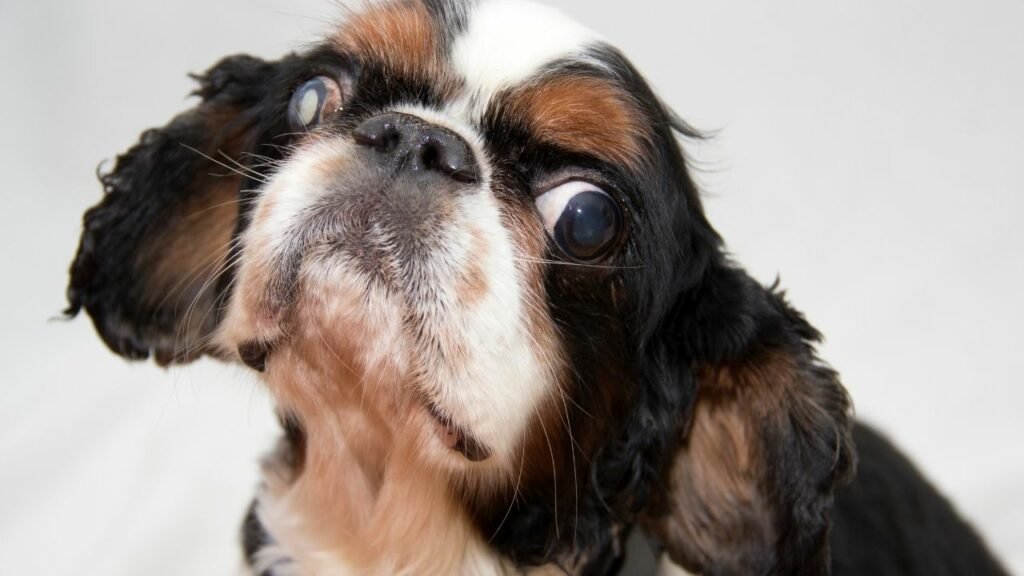
This breed was initially bred for companionship, with their small size and affectionate demeanor making them ideal lap dogs. Over time, breeders selectively bred these spaniels for specific traits such as a shorter snout and a more domed head, leading to the distinct appearance of the modern King Charles Spaniel. Their luxurious coat and regal bearing continued to make them symbols of status and wealth.
Cavalier King Charles Spaniel: Origins and Differentiation
The Cavalier King Charles Spaniel was developed in the 20th century, spurred by a desire to rekindle the appearance of the “old type” King Charles Spaniel. This initiative was led by enthusiasts like Roswell Eldridge, who sought to revive the breed with a longer nose and flatter head, as depicted in historic paintings from the time of King Charles II.
These efforts led to the establishment of the Cavalier as a separate breed, distinct from the King Charles Spaniel. The Cavalier King Charles Spaniel retains the affectionate and sociable nature of its forebears but differs in its physical characteristics. It has a longer, less snubbed nose, a less pronounced dome to the skull, and generally larger size compared to the King Charles Spaniel.
While both breeds share a common ancestry, the divergent breeding goals over the centuries have led to significant differences in appearance and, to some extent, temperament. The Cavalier King Charles Spaniel, often simply called the Cavalier, has become known for its friendly and less reserved personality compared to the more demure King Charles Spaniel.
King Charles Spaniel and Cavalier King Charles Physical Characteristics
Size: Height and Weight Comparison
The King Charles Spaniel and the Cavalier King Charles Spaniel, while similar in appearance, show noticeable differences in their size.
- King Charles Spaniel: This breed typically stands about 9 to 10 inches at the shoulder and weighs between 13 and 18 pounds. Their compact size classifies them as a toy breed.
- Cavalier King Charles Spaniel: Cavaliers are slightly larger, standing at 12 to 13 inches at the shoulder. They weigh between 13 and 18 pounds as well, but their slightly taller frame gives them a more elongated appearance.
Coat: Color Variations, Length, and Grooming Needs
Both breeds have beautiful, silky coats, but they differ slightly in terms of color variations and grooming requirements.
- King Charles Spaniel: Their coat comes in four recognized color patterns: Blenheim (chestnut and white), Prince Charles (tricolor), King Charles (black and tan), and Ruby (solid red). The coat is moderately long and needs regular grooming to prevent tangles and mats.
- Cavalier King Charles Spaniel: Cavaliers also have four recognized color patterns: Blenheim, tricolor, black and tan, and Ruby. Their coats are longer than the King Charles Spaniel’s and require more frequent grooming. Cavaliers often have a distinctive “mane” of fur around their neck and ears, giving them a regal appearance.
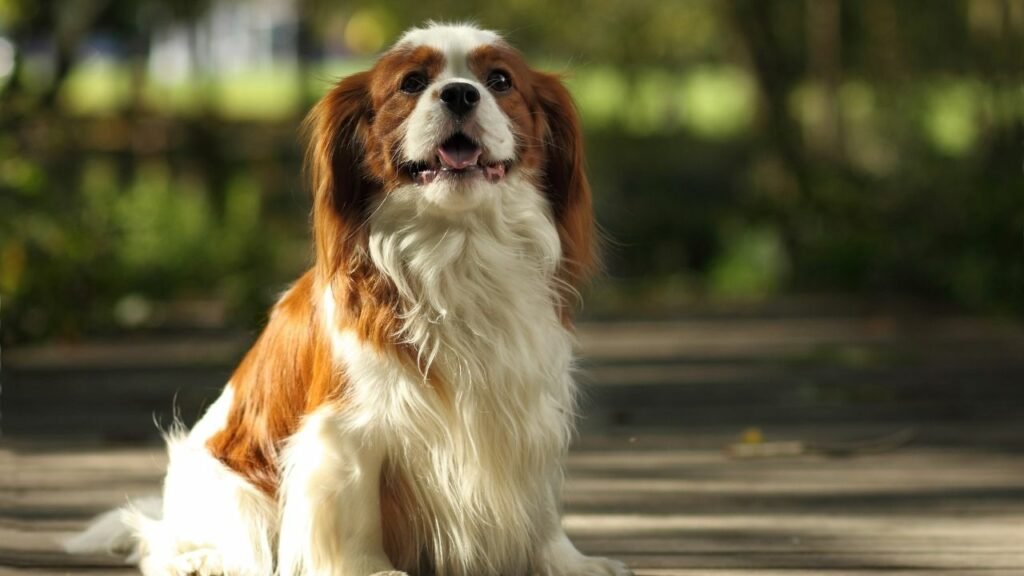
Distinctive Features: Facial Structure, Ear Shape, and Tail Characteristics
The breeds have distinct facial features that set them apart.
- King Charles Spaniel: They have a domed head, a short, upturned nose, and large, dark eyes that give them a distinctive, sweet expression. Their ears are long, set high on the head, and heavily feathered. Traditionally, their tails were docked, but this practice is now illegal in many countries.
- Cavalier King Charles Spaniel: Cavaliers have a flatter head than the King Charles Spaniel, with a longer nose. Their eyes are round and expressive, contributing to their friendly appearance. The ears are set high but are not as heavily feathered as the King Charles Spaniel’s. Like the King Charles, the Cavalier’s tail was traditionally docked, but this is also becoming less common due to changing ethical standards.
In summary, while both the King Charles Spaniel and the Cavalier King Charles Spaniel share similar coat colors and a general look, they differ in size, the length and grooming needs of their coat, and distinctive facial and bodily features. These differences contribute to each breed’s unique charm and appeal.
King Charles Spaniel and Cavalier King Charles Temperament and Behavior
General Disposition of Each Breed
- King Charles Spaniel: Known for their regal yet affectionate nature, King Charles Spaniels are typically calm and composed. They possess a gentle demeanor, often displaying a quiet and reserved personality. These dogs are loyal to their owners and enjoy being pampered and spending time in a relaxed environment. They can be a bit more aloof with strangers, showing a dignified reserve.
- Cavalier King Charles Spaniel: The Cavalier is often described as affectionate, friendly, and outgoing. They are known for their adaptable and sociable nature, always eager to please their owners. Unlike the more reserved King Charles Spaniel, Cavaliers tend to be more playful and energetic, often seeking interaction and engagement.
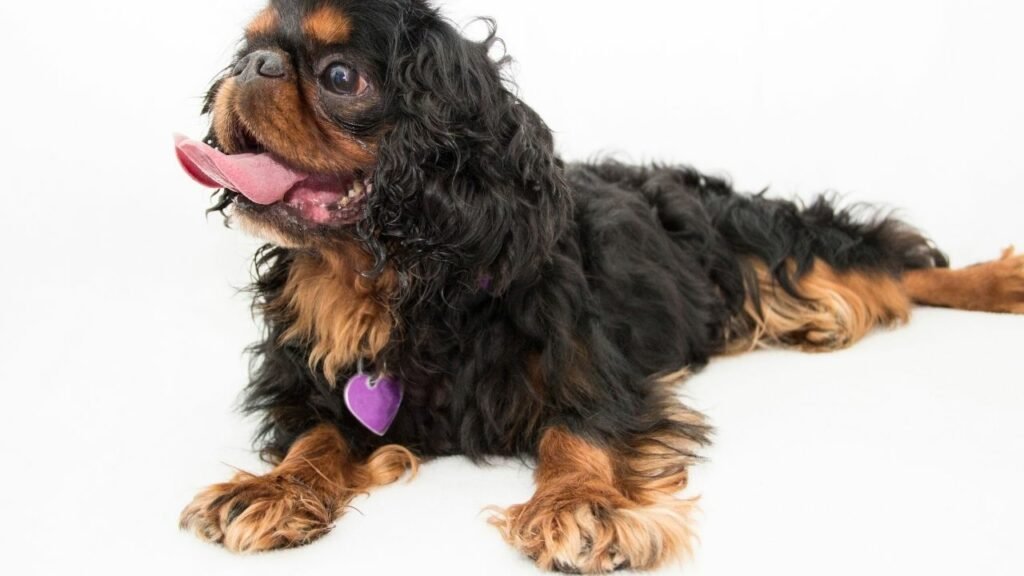
Interaction with Families, Children, and Other Pets
- King Charles Spaniel: This breed is generally good with families and can be quite loving with children, especially when raised together. However, due to their more reserved nature, they may prefer a quieter household or one with older children who understand how to interact gently with small dogs. They typically get along well with other pets, especially if socialized from a young age.
- Cavalier King Charles Spaniel: Cavaliers are excellent family pets and are particularly good with children. Their playful and gentle nature makes them great companions for kids. They are also known for being very sociable with other dogs and pets, often displaying a friendly demeanor towards everyone they meet.
Behavioral Tendencies Unique to Each Breed
- King Charles Spaniel: These dogs often prefer leisure over vigorous activity, enjoying quiet times and gentle play. They can be more sensitive to their environment and may not adapt as quickly to changes. Their loyalty to their family can sometimes translate into a bit of separation anxiety if left alone for long periods.
- Cavalier King Charles Spaniel: In contrast, Cavaliers often display a more adventurous spirit. They enjoy outdoor activities and are usually more adaptable to different environments and situations. Their friendliness can sometimes lead them to be overly trusting of strangers, which means they are not typically good guard dogs.
In conclusion, while both breeds share a loving and affectionate nature, the King Charles Spaniel tends to be more reserved and calm, preferring a peaceful environment, whereas the Cavalier King Charles Spaniel is more outgoing and adaptable, thriving in a more active and social setting. These temperament differences are important to consider when choosing the breed that best fits your lifestyle and family dynamics.
King Charles Spaniel and Cavalier King Charles Health and Lifespan
Common Health Issues in Each Breed
- King Charles Spaniel: This breed can be prone to certain health issues, including heart problems like mitral valve disease, as well as eye conditions such as cataracts. They are also susceptible to breathing problems due to their short snouts, a condition known as brachycephalic syndrome. Ear infections can be common due to their long, feathered ears.
- Cavalier King Charles Spaniel: Cavaliers share some health concerns with the King Charles Spaniel, particularly heart issues such as mitral valve disease. They are also prone to a unique condition called syringomyelia, where cavities or cysts form within the spinal cord near the brain. Other health concerns include hip dysplasia and certain eye conditions like retinal dysplasia.
Average Lifespan
- King Charles Spaniel: The average lifespan of a King Charles Spaniel is typically between 10 to 12 years. With proper care and regular veterinary check-ups, some can live even longer.
- Cavalier King Charles Spaniel: Cavaliers generally have a similar lifespan, averaging around 9 to 14 years. Their longevity is heavily influenced by their overall health and the quality of care they receive.
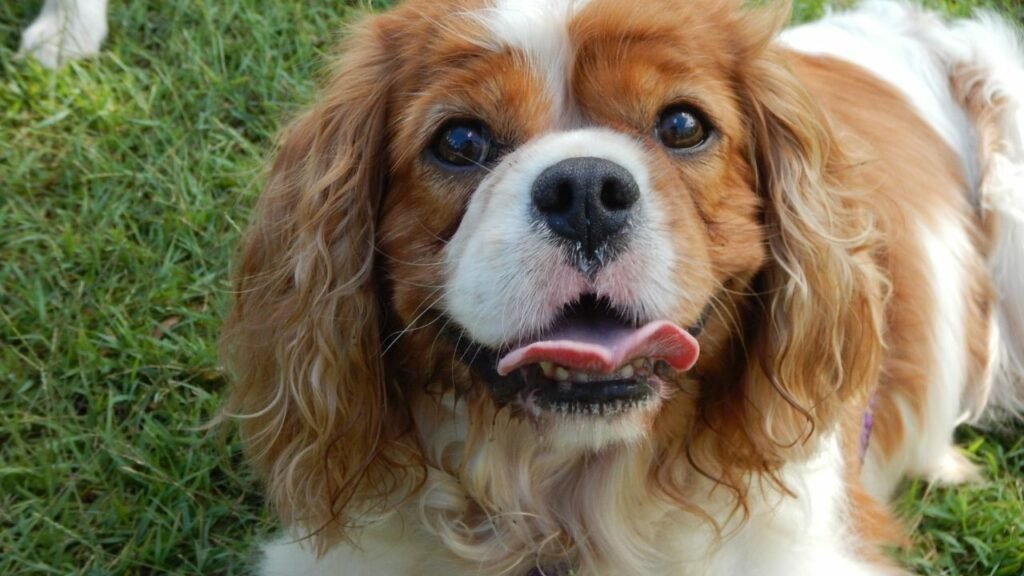
Preventive Health Measures and Veterinary Care Requirements
Regular veterinary care is crucial for both breeds to monitor and address any health concerns promptly. Preventive measures include:
- Regular Check-ups: Regular visits to the vet for check-ups and vaccinations are essential. These visits are also an opportunity to monitor heart health, particularly important for both breeds.
- Diet and Exercise: A balanced diet and appropriate exercise are crucial for maintaining good health and preventing obesity, which can exacerbate health issues.
- Dental Care: Good oral hygiene is important, as both breeds can be prone to dental issues.
- Ear Care: Regular ear cleaning is recommended, especially for the King Charles Spaniel, to prevent infections.
- Awareness of Breed-Specific Issues: Owners should be educated about the signs of specific health issues like syringomyelia in Cavaliers and breathing difficulties in King Charles Spaniels.
- Genetic Testing: For breeding dogs, genetic testing for common hereditary conditions can help reduce the incidence of these issues in puppies.
Proactive health management, including regular veterinary care, a healthy lifestyle, and awareness of breed-specific issues, can significantly contribute to the quality of life and longevity of both the King Charles Spaniel and the Cavalier King Charles Spaniel.
King Charles Spaniel and Cavalier King Charles Training and Exercise Needs
Trainability: Ease of Training and Intelligence
- King Charles Spaniel: This breed is generally eager to please, which aids in training. They are intelligent and can pick up basic commands relatively easily. However, their slightly reserved nature may require a bit more patience and gentle encouragement. Positive reinforcement techniques work best, as they respond well to treats and praise. Early socialization and obedience training are recommended to bring out the best in these dogs.
- Cavalier King Charles Spaniel: Cavaliers are known for their intelligence and willingness to learn, which makes them quite trainable. They are often used in obedience and agility competitions, showcasing their aptitude for learning and performing tasks. Like the King Charles Spaniel, they respond best to positive reinforcement. Their sociable nature makes them eager to engage in training sessions, especially if they involve interactive and fun activities.
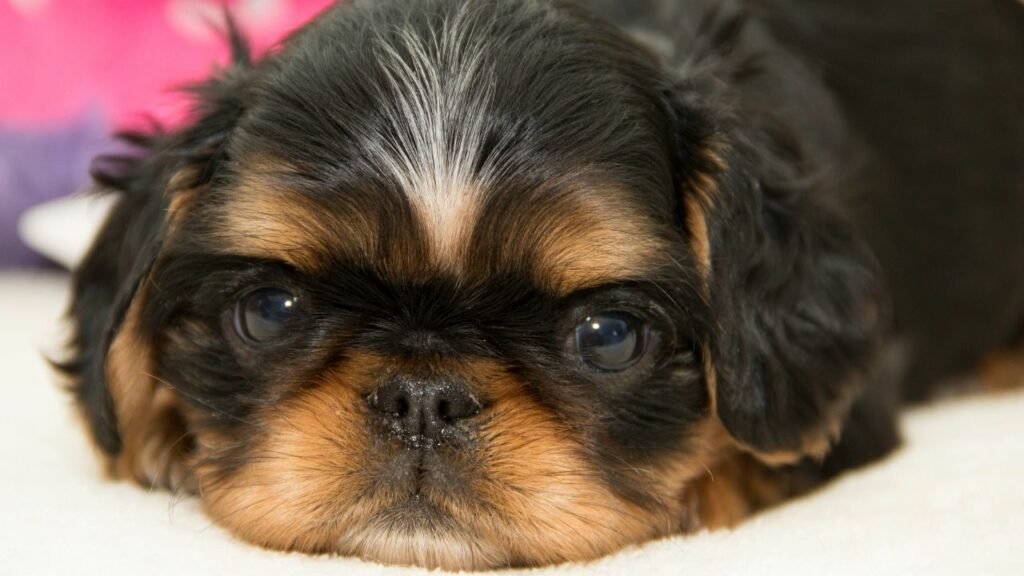
Exercise Requirements: Physical Activity Needs and Suitability for Various Living Conditions
- King Charles Spaniel: They have moderate exercise needs. A few short walks a day along with some playtime are usually sufficient to keep them happy and healthy. Due to their small size and calm demeanor, they are well-suited for apartment living as long as their daily exercise needs are met. They also enjoy time spent lounging and cuddling with their owners.
- Cavalier King Charles Spaniel: Cavaliers require a bit more exercise than the King Charles Spaniel. Regular walks and opportunities to run and play are important for their physical and mental well-being. They are adaptable to various living conditions, including apartments, as long as they get their daily exercise. They also enjoy interactive play sessions, which can be both mentally stimulating and physically rewarding.
Both the King Charles Spaniel and the Cavalier King Charles Spaniel are intelligent and trainable, with the Cavalier showing a slightly higher energy level and enthusiasm for physical activities. Both breeds benefit from regular exercise and mental stimulation, but their exercise needs can be comfortably met in a variety of living environments, making them versatile companions for different lifestyles.
King Charles Spaniel and Cavalier King Charles Breed Popularity and Availability
Current Popularity Trends
- King Charles Spaniel: The King Charles Spaniel, while less popular than its Cavalier counterpart, holds a special place among toy breed enthusiasts. Its distinctive appearance and noble history continue to attract a dedicated following. The breed is more popular in the UK, reflecting its historical roots, but it also has a loyal fan base in other parts of the world, including the United States.
- Cavalier King Charles Spaniel: The Cavalier has seen a surge in popularity and is now one of the most favored breeds, especially in the United States and the UK. Its friendly disposition and adaptable nature make it a sought-after companion for families, singles, and seniors alike. The breed’s popularity is reflected in its frequent appearance in media and at dog shows.
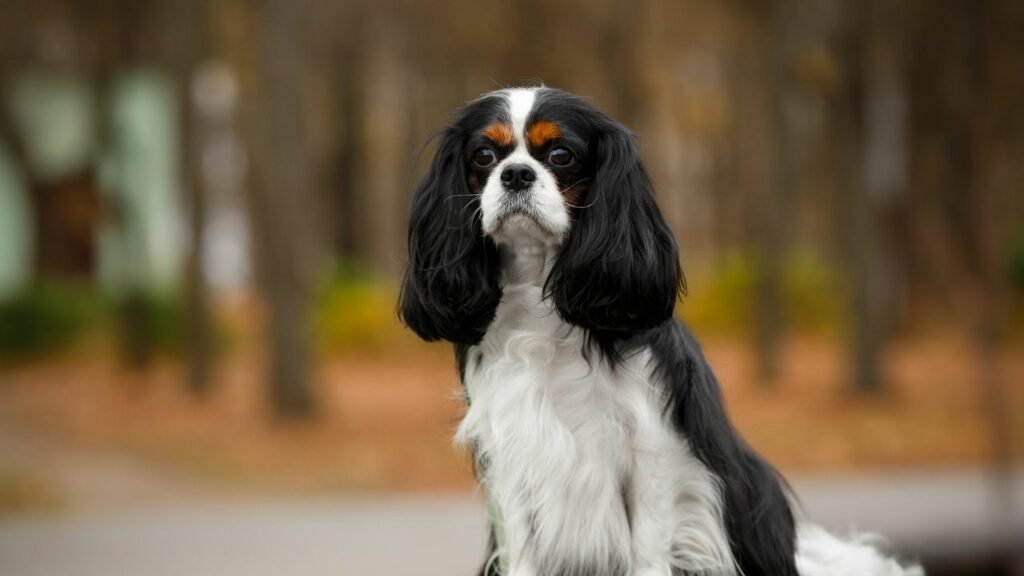
Availability: Breeder Information and Adoption Options
- King Charles Spaniel: Finding a reputable breeder is crucial for potential owners. It’s important to choose breeders who prioritize the health and well-being of their dogs, conducting health screenings and providing a good environment for the puppies. The American Kennel Club (AKC) and other national kennel clubs can provide resources for finding responsible breeders. Adoption from rescue organizations specializing in King Charles Spaniels is also an option, though these dogs may be less commonly available through rescue channels.
- Cavalier King Charles Spaniel: Due to their popularity, Cavaliers are more readily available from breeders. However, the same caution applies: potential owners should seek out breeders who adhere to ethical breeding practices and perform necessary health screenings. The popularity of Cavaliers also means they are more frequently found in rescues and shelters, providing a good option for those looking to adopt an older dog or provide a home to a dog in need.
In both cases, it’s important for potential owners to do their research and opt for sources that ensure the health and happiness of their dogs. Whether choosing a breeder or looking to adopt, understanding the breed’s specific needs and common health issues is key to providing a safe and loving home for these dogs.
King Charles Spaniel and Cavalier King Charles Living Conditions and Adaptability
Ideal Living Conditions for Each Breed
- King Charles Spaniel: This breed thrives in a calm and loving home environment. They are well-suited to apartment living due to their small size and relatively low energy levels. However, they do appreciate having access to a secure outdoor space where they can explore and relax. Their sensitivity to extreme temperatures means that their living environment should be temperature-controlled to ensure their comfort.
- Cavalier King Charles Spaniel: Cavaliers are adaptable to various living situations, whether it be a spacious house with a yard or a smaller apartment setting. They enjoy being part of family activities, so homes where they can interact regularly with their owners are ideal. Like the King Charles Spaniel, they also prefer living in environments where they are protected from harsh weather conditions.
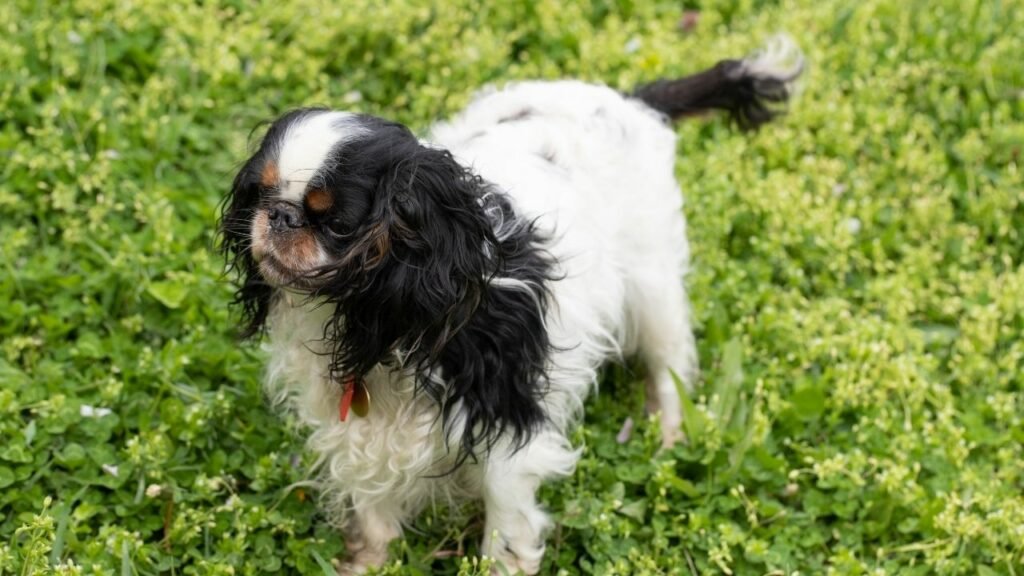
Adaptability to Different Environments (Apartments, Houses with/without Yards)
- King Charles Spaniel: These dogs adapt well to apartment living, as long as they receive adequate daily exercise and mental stimulation. Their laid-back nature makes them less prone to nuisance barking, which is beneficial in shared living spaces. They also enjoy the comfort and security of indoor living, often choosing to spend most of their time close to their owners.
- Cavalier King Charles Spaniel: Cavaliers are equally comfortable in apartments or houses. They are generally quiet, making them good neighbors in apartment settings. If living in a house with a yard, it’s important that the yard is securely fenced, as Cavaliers can be curious and may wander. They are social dogs and prefer not to be left alone for extended periods, regardless of the size of their living space.
King Charles Spaniel and Cavalier King Charles Maintenance and Care
Grooming Requirements
- King Charles Spaniel: This breed requires regular grooming to maintain its coat’s health and appearance. Their moderate-length coat should be brushed several times a week to prevent matting and tangling, especially around the ears and paws. Regular ear cleaning is important to prevent infections, given their long, floppy ears. They also require routine dental care and nail trimming.
- Cavalier King Charles Spaniel: Cavaliers have a longer coat that needs daily brushing to keep it free of knots and tangles. Pay special attention to the feathering on the ears, legs, and tail. Like the King Charles Spaniel, they need regular ear cleaning and dental care. Bathing can be done as needed, usually once every few weeks, unless the dog gets particularly dirty.
Diet and Nutrition Needs
- King Charles Spaniel: A balanced diet is crucial for this breed. They can be prone to obesity, so it’s important to monitor their food intake and ensure they get a diet appropriate for their age, size, and activity level. Avoid overfeeding and provide a consistent feeding schedule.
- Cavalier King Charles Spaniel: Cavaliers also require a well-balanced diet. They are energetic and may require a diet that supports their activity level, but like the King Charles, they are prone to weight gain, so portion control is important. Fresh water should always be available, and treats should be given in moderation.
Ongoing Care and Attention Needs
- King Charles Spaniel: They thrive on human companionship and do not like to be left alone for long periods. Regular vet check-ups are essential to monitor their health, especially for heart and eye conditions. They enjoy gentle play and short walks, which are also important for their mental and physical well-being.
- Cavalier King Charles Spaniel: Cavaliers are sociable and need regular interaction with their human family. They enjoy more active play and longer walks than the King Charles Spaniel. Regular health check-ups are important, particularly for monitoring heart health and the risk of syringomyelia.
For both breeds, mental stimulation is as important as physical care. This can include interactive play, training sessions, and toys that challenge their minds. Keeping up with grooming, diet, exercise, and veterinary care will help ensure these dogs live a long, healthy, and happy life.
King Charles Spaniel and Cavalier King Charles Suitability for Different Owners
Best Suited Owner Types for Each Breed
- King Charles Spaniel:
- Families: Well-suited for families, particularly those with older children who understand how to interact gently with small dogs.
- Singles: A great companion for single owners, especially those who can spend a lot of time with their pet.
- Seniors: Their calm and affectionate nature makes them excellent companions for seniors, offering comfort without the need for extensive physical activity.
- Apartment Dwellers: Ideal for apartment living due to their small size and moderate exercise needs.
- Cavalier King Charles Spaniel:
- Families: Excellent for families with children of all ages, as they are playful and generally gentle with kids.
- Singles: Good for single owners, particularly those looking for an active and affectionate companion.
- Seniors: Suitable for seniors who can meet their moderate exercise needs and enjoy a sociable and affectionate pet.
- First-Time Dog Owners: Their friendly nature and trainability make them a good option for novice owners.
- Active Individuals: Ideal for people who enjoy outdoor activities and can take them on regular walks and outings.
Considerations for First-Time Dog Owners
- King Charles Spaniel:
- These dogs are relatively easy to handle due to their size and temperament, making them a good choice for first-time owners.
- Their grooming and health care needs require commitment, so new owners should be prepared for regular maintenance.
- Understanding their need for companionship is important; they do best with owners who are not away from home for long periods.
- Cavalier King Charles Spaniel:
- Cavaliers are also a good choice for first-time owners because of their friendly disposition and willingness to please.
- They require a bit more exercise than the King Charles Spaniel, so new owners should be prepared to provide daily walks and playtime.
- Awareness of their health issues, particularly heart conditions and syringomyelia, is important. Prospective owners should be ready to commit to regular veterinary care.
For both breeds, it’s essential for potential owners to understand the responsibilities of dog ownership, including time, financial commitment, and long-term care. Both the King Charles Spaniel and the Cavalier King Charles Spaniel can adapt to various living situations and are generally good with all types of people, making them versatile companions for a wide range of owners.
King Charles Spaniel and Cavalier King Charles Cost of Ownership
Initial Purchase/Adoption Cost
- King Charles Spaniel:
- Purchasing a King Charles Spaniel from a reputable breeder can be quite costly, with prices typically ranging from $1,000 to $2,500, depending on the pedigree and location. Sometimes, they can cost even more if they are from an exceptional line.
- Adoption costs are generally lower, ranging from $300 to $600, which usually covers vaccinations, spaying/neutering, and other initial medical expenses.
- Cavalier King Charles Spaniel:
- The cost of a Cavalier King Charles Spaniel from a reputable breeder often falls between $1,500 and $3,500, reflecting their popularity and breed standards. Show-quality dogs can be priced even higher.
- Adoption fees are similar to those of the King Charles Spaniel, typically ranging from $300 to $600, depending on the rescue organization and the region.
Long-Term Costs (Healthcare, Grooming, Food)
- Healthcare: Both breeds require regular veterinary check-ups, vaccinations, and routine health care. Potential costs include expenses for preventative measures such as heartworm medication and flea control, as well as treatments for breed-specific health issues. Owners should also consider the potential costs of treating conditions like heart disease or syringomyelia, particularly for the Cavalier King Charles Spaniel.
- Grooming: Regular grooming expenses for both breeds can add up, especially for the Cavalier with its longer coat. Professional grooming sessions can range from $40 to $60 per visit, depending on the services. Home grooming supplies also contribute to the overall cost.
- Food: The cost of feeding these breeds varies depending on the dog’s size, age, and the quality of the food. High-quality dog food is recommended, and owners should expect to spend approximately $30 to $70 per month on dog food, treats, and other dietary supplements.
- Miscellaneous: Other costs include bedding, toys, leashes, collars, and possibly pet insurance, which can help mitigate unexpected medical expenses.
Overall, the cost of owning either a King Charles Spaniel or a Cavalier King Charles Spaniel involves a significant financial commitment, both initially and over the long term. Prospective owners should be prepared for the ongoing expenses associated with maintaining their pet’s health, well-being, and comfort.
King Charles Spaniel and Cavalier King Charles Breed Clubs and Organizations
Breed-Specific Clubs and Organizations
- King Charles Spaniel:
- The English Toy Spaniel Club of America (ETSCA) is one of the primary organizations in the United States dedicated to the King Charles Spaniel, known there as the English Toy Spaniel.
- In the UK, The King Charles Spaniel Club is a key organization, playing a significant role in maintaining the breed standards and promoting the breed.
- These clubs typically offer resources for breeders and owners, organize events, and provide information about the breed to the public.
- Cavalier King Charles Spaniel:
- The Cavalier King Charles Spaniel Club, USA, and The Cavalier King Charles Spaniel Club in the UK are two major organizations for the breed. They are dedicated to the health, welfare, and promotion of Cavaliers.
- There are also numerous regional clubs across various countries that cater to Cavalier King Charles Spaniel enthusiasts, providing opportunities for socialization, education, and participation in breed-specific activities.
Role in Breed Preservation and Community
- Breed Preservation:
- These clubs play a crucial role in preserving the breed standards established by kennel clubs like the American Kennel Club (AKC) and The Kennel Club (UK).
- They often collaborate with veterinary researchers and organizations to address health issues specific to the breed, promoting responsible breeding practices to ensure the health and longevity of the breeds.
- Breed clubs also maintain breed registries, track genetic health, and sometimes offer breeder referral services to help potential owners find reputable breeders.
- Community Role:
- Beyond breed preservation, these organizations create a community for breed enthusiasts. They organize events like dog shows, meet-ups, and educational seminars, providing opportunities for socializing and learning.
- They also often engage in rescue operations, helping to rehabilitate and rehome dogs in need.
- These clubs can be a valuable resource for new and experienced owners alike, offering advice on care, training, and health issues.
Breed-specific clubs and organizations play a vital role not only in preserving the unique qualities of the King Charles Spaniel and the Cavalier King Charles Spaniel but also in fostering a supportive community for owners and enthusiasts. Their efforts ensure that these cherished breeds continue to thrive and bring joy to their human companions.
References and Resources
For prospective owners of the Cavalier King Charles Spaniel and the King Charles Spaniel (English Toy Spaniel), there are numerous valuable resources and expert insights available:
Cavalier King Charles Spaniel
- The Cavalier King Charles Spaniel Club, USA: Founded in 1954, this club serves as the original registering body for Cavaliers in the United States. Its goal is to protect the breed from exploitation, emphasizing the emotional well-being and physical quality of life of every Cavalier. The club underscores that Cavaliers are not kennel dogs and thrive on companionship, being particularly well-suited for families and as lap dogs. They are active, requiring regular exercise and may have specific health testing needs that potential owners should discuss with breeders.
King Charles Spaniel (English Toy Spaniel)
- The English Toy Spaniel Club of America: Recognized as the national parent club and a member of the American Kennel Club, this organization provides valuable information about the breed, known for its compact size, short-nosed, domed head, and affectionate demeanor. The breed typically weighs between eight to fourteen pounds and is known for its large head in proportion to its size and plush, chubby look. The coat is profusely coated with heavy fringing, and the breed is known for being bright, interested, affectionate, and eager to please.
For those considering adding a Cavalier King Charles Spaniel or an English Toy Spaniel to their family, these organizations offer a wealth of information, including breed standards, health considerations, and ethical breeding practices. They also provide a community for enthusiasts and owners, offering support and guidance for both new and experienced dog owners. Prospective owners are encouraged to engage with these clubs and their resources to gain a deeper understanding of the breeds and to find reputable breeders or adoption options.


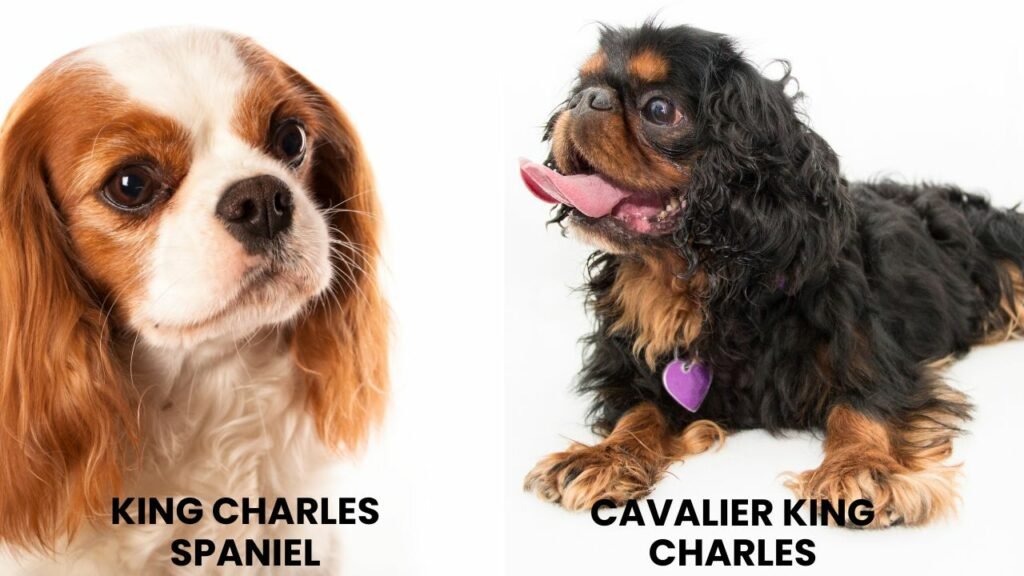
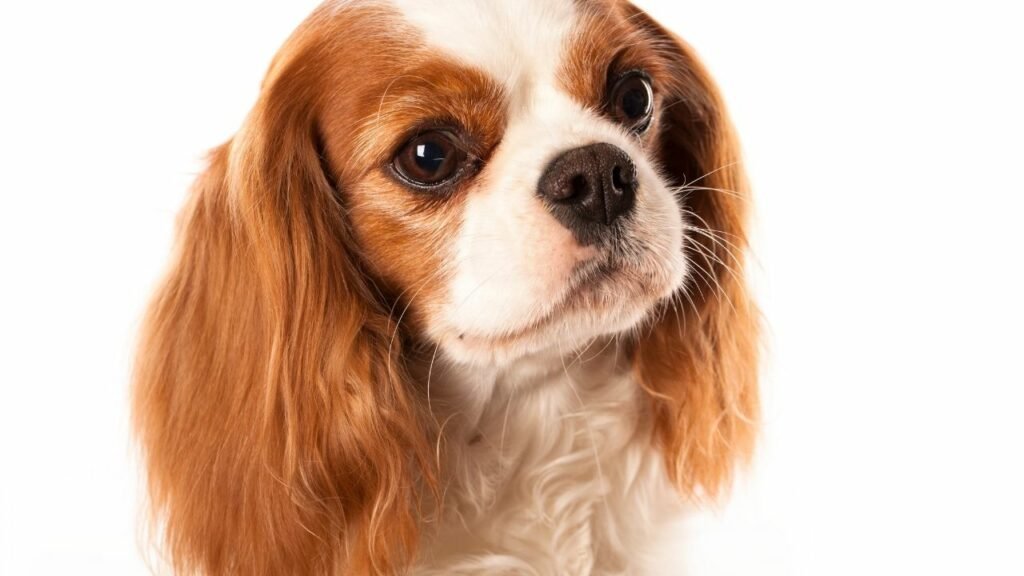





Leave a Reply